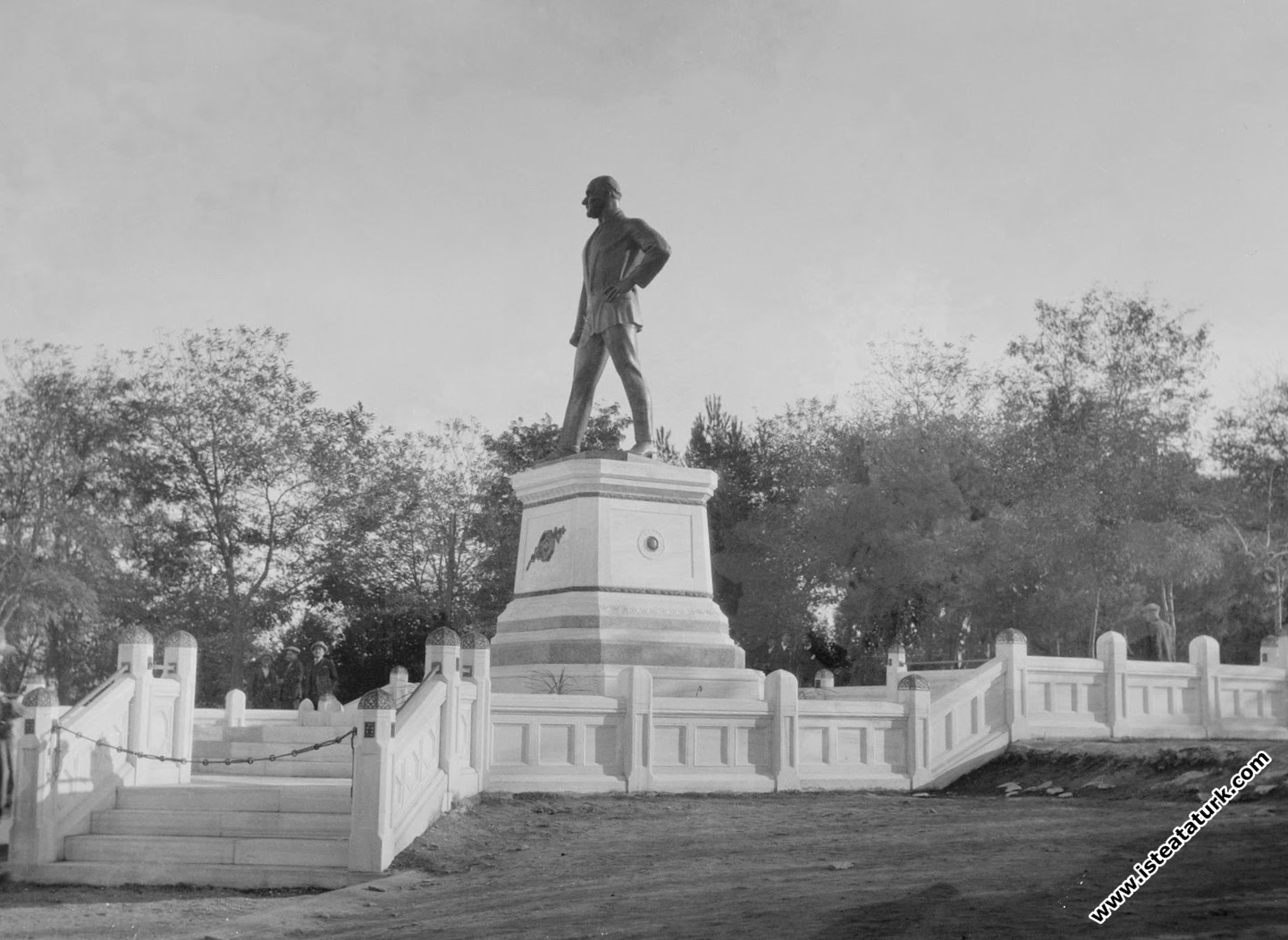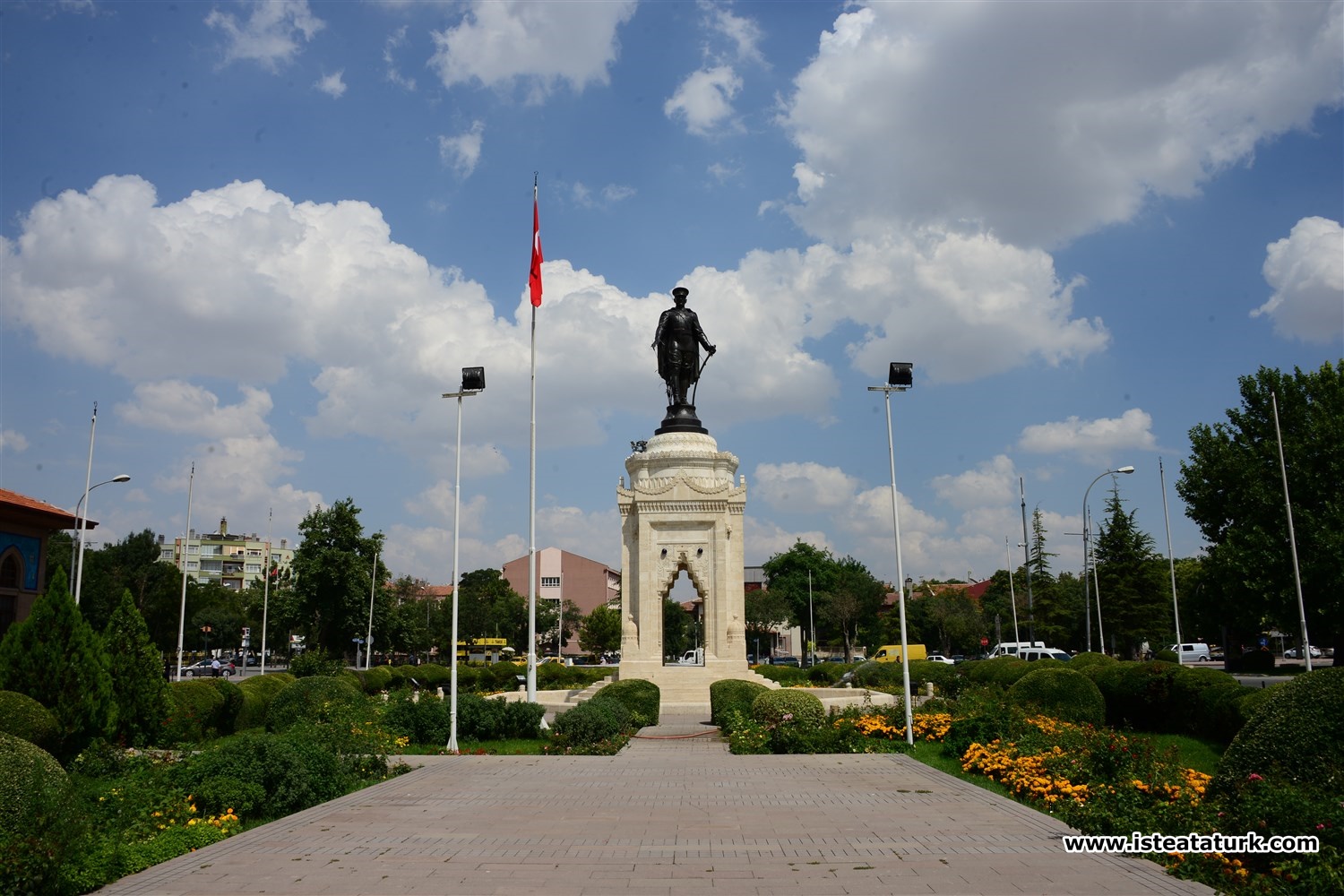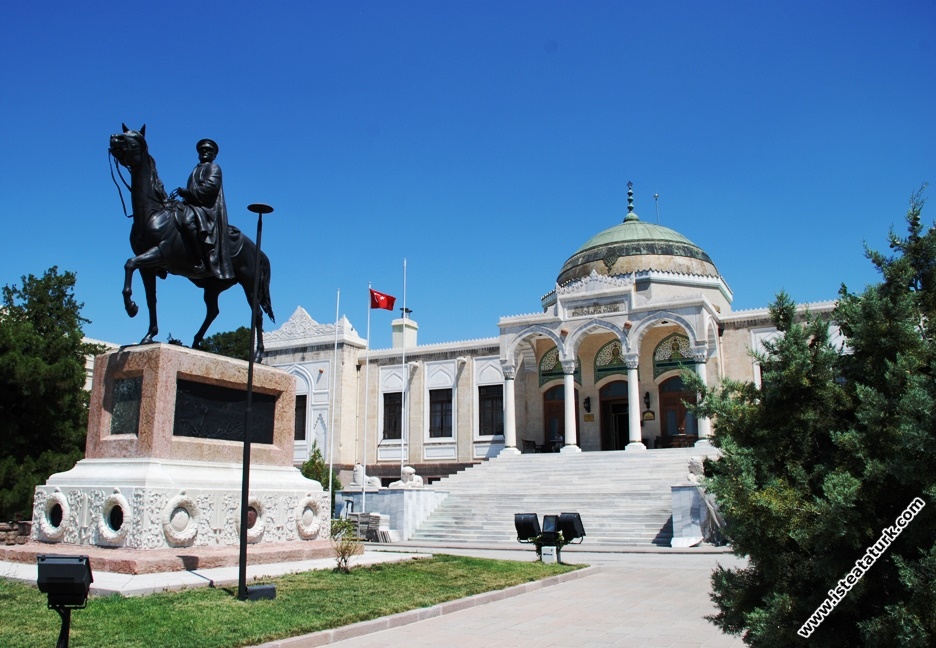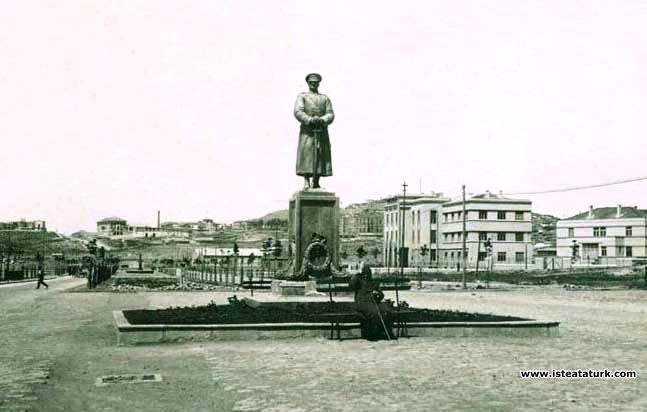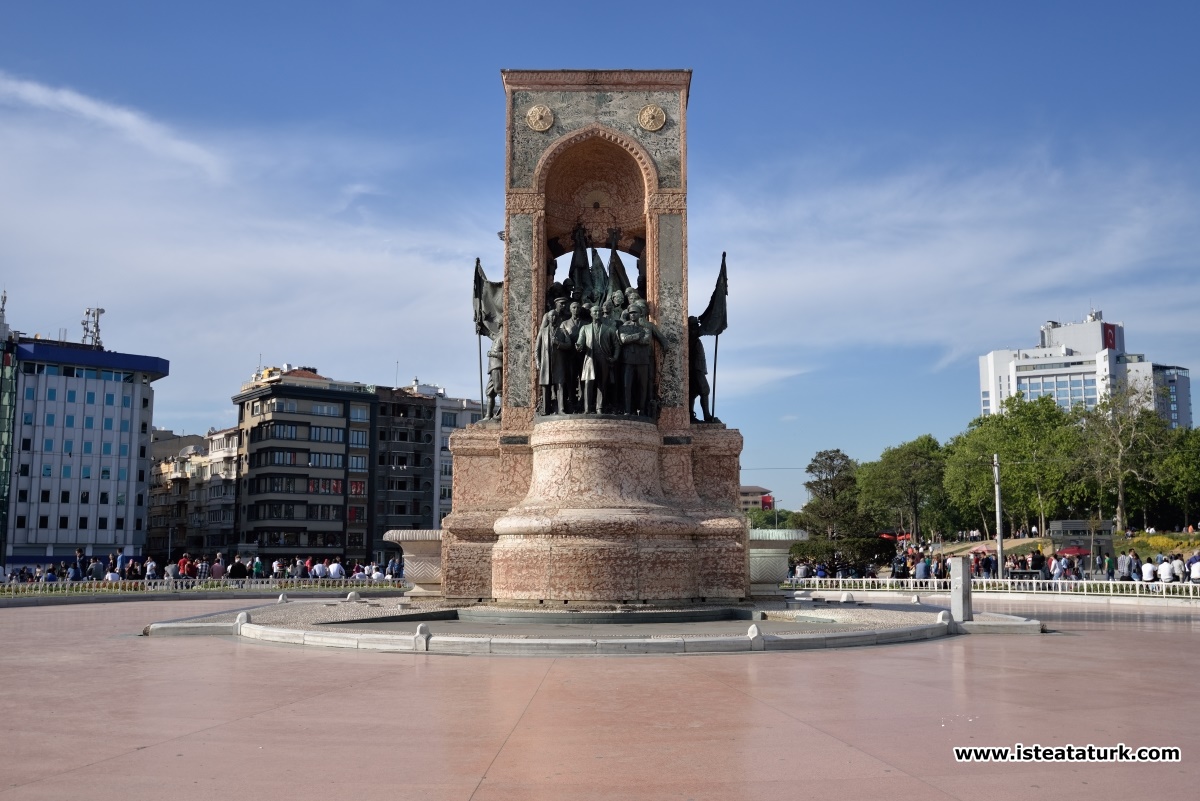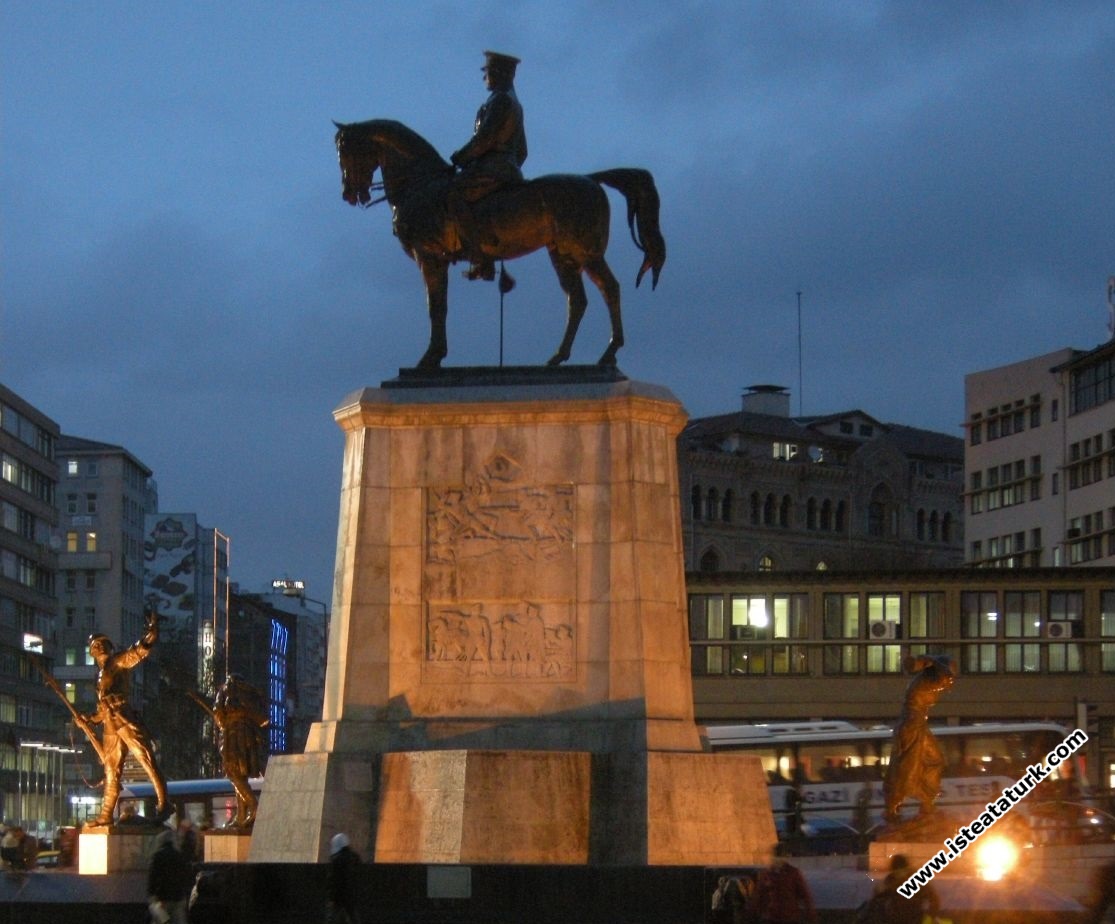
Ulus Atatürk Monument, Ankara
Character Size
Ulus Atatürk Monument, Ankara
Ulus (Victory) Monument , Ankara
LOCATION: Ankara Ulus Square
DATE: 24 November 1927 (Anonymous 1927 i:1)
ARTIST: Heinrich Krippel
MADE BY: By Turkish people under the leadership of Yenigün Newspaper (anonymous 1927 i:1)
HOW IT IS PROJECTED: -
ELECTIVE COMMITTEE : Under the chairmanship of Ali Fuad Pasha, who was the second president of the Turkish Grand National Assembly at the time, a memorial commission consisting of thirty and forty people was formed. İsmail Habib Bey was the general clerk of the commission. (Habib 1937:3)
COST :-
PLACE OF BUILDING: Vienna/United Mining Works (Vereinigte Metallwerke) (Aslanapa 1993:44; Elibal 1973 a:195)
MONUMENT
Material: Sculpture; bronze, pedestal, red stone and marble
Dimensions :-
Inscriptions:
Front: A monument of victory with the initiative of the New Day and the participation of the whole nation.
The Turkish Nation found the way to best express its victorious independence and independence, and its immense modern revolution, in the above real example.
Commander-in-Chief Ghazi Mustafa Kemal
From now on, I will work as a mujahid in the sine-i millet.
Erzurum 8 July 1332 / 1914
On the left front: By strangling the enemy army in the sanctuary of our homeland, we will be a blessing and independence.
6 August 1337 / 1921
At the rear: The lucky land mine that will be found will be found
12 Lawsani 1337 / 1921
On the right front: The main base of the enemy was destroyed.
Armies, your first goal is the Mediterranean. Forward!
Dumlupınar 1 September 1338 / 1922
History of the Nation Victory Monument
The Victory Monument, located in Ulus Square, which was then called Hakimiyet-i Milliye, was built under the leadership of Yunus Nadi Bey, owner of Yeni Gün Newspaper, with the financial contributions of the Turkish nation. A nationwide campaign was launched to have the monument built, and a citizens' committee was established to run the contest opened within the campaign. A specification was prepared in French and Ottoman by the Committee, and after explaining in detail against whom, how and for what purposes the War of Independence was fought, the personality and characteristics of Mustafa Kemal, the leader of the victory, were defined in detail.
The special committee established for this work, after exchanging views on the options regarding the form of the monument to be erected; He decided to erect a natural-sized bronze statue of Gazi Mustafa Kemal Pasha, depicted as a president in plain clothes, standing on a pedestal. Here, the plan of the Hakimiyet-i Milliye Square, where the monument will be placed, is given together with the surrounding structures.
Among the projects submitted to the competition, the project of Austrian sculptor Heinrich Krippel was appreciated and its construction was started and the statue was opened with a ceremony held on Thursday, November 24, 1927.
Artistic Features of the Monument
The monument was designed and completed as a sculpture group. The main highlight here is the success that emerged as a result of the unity of the Turkish nation in the War of Independence. Standing on a triangular pedestal, the sculpture group faces the direction of the Grand National Assembly and the Station, where the Republic was founded. There are two Mehmetçik in front of the statues showing integrity on the pedestal, Ankara Ulus Atatürk Monument. On the right are the Mehmetçik statues calling his friends to war and on the left watching the enemy. In the back, there is a statue of a Turkish woman carrying a bullet.
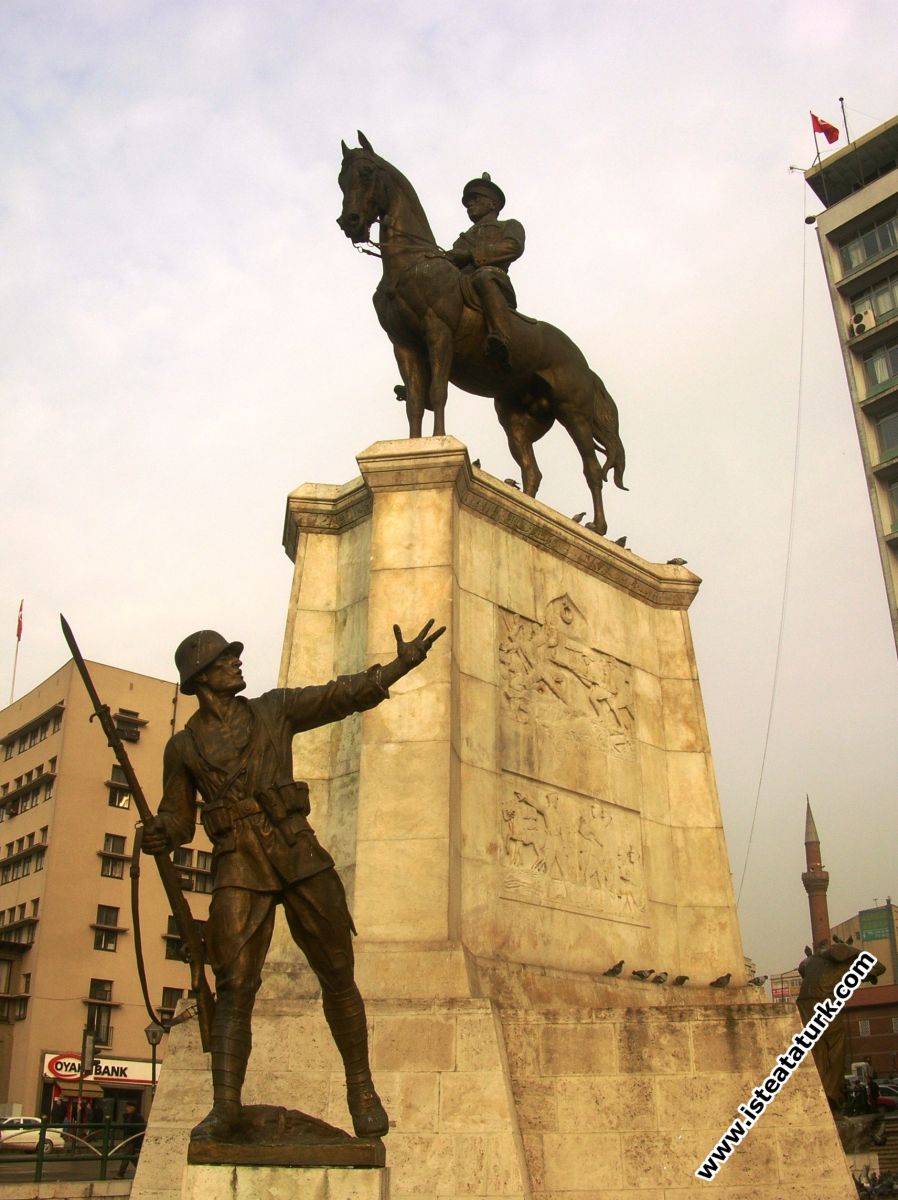
In the middle of the sculpture group, the main pedestal of the monument, which has a polygonal plan and rises by narrowing, is reached on a polygonal plinth. On the southern front of this marble pedestal, the Turkish soldier who defeated the enemy in Sakarya; At the bottom, there are two panels with reliefs depicting Mustafa Kemal, the commanders and the Turkish soldier during the war. On the northern façade of the monument base, the Turkish soldier parading after the victory is depicted on the two relief panels on the upper one, and the Turkish peasant carrying weapons and ammunition to the front with oxcarts on the lower one.
There are three rising sun motifs and a wreath motif framing them on the front of the marble base, on the upper part of the three-sided recessed part. On the top of the monument's polygonal base, which narrows and rises, there are a row of Mustafa Kemal's concise words written in gold leaf, surrounding the monument. On the back of the marble pedestal of the monument, there is a tree of life motif that emerges from the soil as a relief in the middle, but one branch is broken and rises more lushly over the broken ground.
While it was decided to erect a natural-sized bronze statue, depicted as a president in plain clothes, on a very high marble pedestal with reliefs of great artistic and historical value, with concise words on it, Gazi Mustafa Kemal, in marshal uniform, stood on all fours under the conditions of that day. He is depicted in bronze on his horse named Sakarya, which treads solidly.
At the end of the project competition, which was opened after the Ministry of Education burned down in 1947, today's Emek Bazaar and Office Building was built instead of the building; The Victory Monument was also taken into consideration within the scope of this project and moved to its present location by being shifted from its former location to the south.
Ulus Atatürk Monument was restored to its present appearance by the restoration, repair and cleaning carried out in August 2002 by the Ministry of Culture with the contributions of the Ankara Governorship.
Sculptor Heinrich Krippel
He was born on September 27, 1883 in Vienna. He studied sculpture at the Academy of Fine Arts in Vienna, and previously worked on tombs and portraits. In Turkey, where he was invited by the Turkish Government between 1925 and 1938, Sarayburnu Atatürk Statue (1925), Konya Atatürk Statue (1926), Ankara Atatürk Statue (1927), Samsun Atatürk Monument (1931), Afyon Karahisar Victory Monument (1935). ), left works such as the Seated Atatürk Monument (1938) in Ankara Sümerbank.
Atatürk hosted the artist in the mansion for these works and posed for him for the monument. The sculptures of the monument group were designed in the artist's workshop in Vienna, cast in bronze at the Vienna United Mining Works, brought to Turkey in pieces and assembled on site. The artist died on April 5, 1945 after a stomach operation in Vienna.
.jpg)
Inscriptions on the Monument
On the belt surrounding the top edge of the pedestal;
"The Turkish nation finds the way that can best express its victorious independence and independence, and its enormous modern revolutions, with the most meaningful symbol, in the above real example."
On the front of the pedestal;
"From now on, I will work as an individual mujahideen for almonds and the nation. 8 July 1919, Erzurum."
"It is found, it will save the lucky land mine."
On the right side of the pedestal;
"By strangling the enemy army in the name of the sanctuary of the homeland, we will be hemahal blessed halas and independence. 6 August 1919"
On the left side of the pedestal;
It reads , "The main line of the enemy has been destroyed. Armies, your first target is the Mediterranean, forward. 1 September 1922" .
Source: 1- A A M Cumhuriyet Dönemi Anıt Heykelleri, Yrd. Doç. Dr. Kıvanç Osma, Ankara 2003. ISBN: 975-16-1678-6. Sayfa: 40- 45
2- http://ankaraheykelleri.wordpress.com
